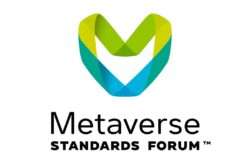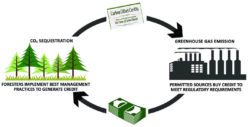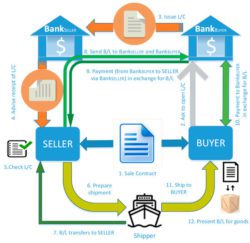Top 10 Ways Blockchain And Metaverse Help With Global Warming

The Metaverse and blockchain are two concepts that have gained significant attention in recent years due to their potential to revolutionize various aspects of technology, business, and daily life. Let’s delve into each of these concepts in detail.
1. Metaverse:
The Metaverse refers to a virtual reality (VR) or augmented reality (AR) space that encompasses a collective virtual shared space where users can interact with a computer-generated environment and other users in real-time. It is often depicted as a three-dimensional immersive world or a combination of multiple interconnected virtual worlds.
Key elements of the Metaverse include:
a. Virtual Reality: The Metaverse provides users with a highly immersive and interactive virtual reality experience. Users can navigate and explore this digital realm through virtual avatars or representations of themselves.
b. Shared Environment: The Metaverse is a shared space where multiple users can simultaneously interact with each other and the virtual environment. It enables social interactions, collaborations, and engagement in various activities, such as gaming, commerce, education, entertainment, and more.
c. Persistent Universe: The Metaverse is a persistent universe, meaning it continues to exist and evolve even when users log off. Changes made by users or the introduction of new content can impact the overall environment and experience for other users.
d. Cross-Platform Accessibility: The Metaverse aims to be accessible across different devices and platforms, allowing users to connect and engage regardless of the specific hardware or software they use. This inclusivity promotes widespread participation and adoption.
e. User-Created Content: The Metaverse encourages user-generated content, enabling users to create and contribute to the virtual environment. This can range from building virtual structures and objects to designing virtual fashion or artwork, fostering a sense of ownership and creativity.
The Metaverse has the potential to transform various industries. It can revolutionize entertainment, enabling new forms of interactive storytelling and immersive gaming experiences. Additionally, it can impact education, enabling virtual classrooms and immersive learning environments. The Metaverse also holds promise in the realm of e-commerce, providing virtual storefronts and personalized shopping experiences.
2. Blockchain:
Blockchain is a distributed ledger technology that allows the creation of a decentralized and transparent network for recording and verifying transactions. It enables the secure storage and transfer of digital assets and information without the need for intermediaries, such as banks or centralized authorities.
Key features of blockchain include:
a. Decentralization: Unlike traditional centralized systems, blockchain operates on a decentralized network of computers (nodes) spread across different locations. This decentralization ensures that no single entity has complete control over the network, enhancing transparency and resilience.
b. Distributed Ledger: The blockchain consists of a digital ledger that records all transactions and interactions within the network. This ledger is distributed across multiple nodes, and each participant has a copy of the entire transaction history, ensuring transparency and data integrity.
c. Consensus Mechanism: Blockchain employs consensus mechanisms to validate and agree upon the state of the ledger. Popular consensus algorithms include Proof of Work (PoW) and Proof of Stake (PoS). These mechanisms ensure that transactions are legitimate and prevent fraudulent activities.
d. Security and Immutability: Once a transaction is recorded on the blockchain, it becomes nearly impossible to alter or tamper with. The cryptographic techniques used in blockchain ensure the integrity and security of data. This feature makes blockchain suitable for applications where trust, security, and transparency are crucial.
e. Smart Contracts: Blockchain platforms often support smart contracts, which are self-executing contracts with predefined rules and conditions. Smart contracts automate the execution and enforcement of agreements, eliminating the need for intermediaries and reducing costs.
Blockchain technology has found widespread applications beyond cryptocurrencies like Bitcoin. It is being utilized in supply chain management to track and authenticate products, in healthcare for secure data exchange and patient record management, in finance for efficient cross-border transactions, in voting systems for transparent and tamper-resistant elections, and in many other areas.
The convergence of the Metaverse and blockchain has the potential to enhance the virtual reality experience by introducing secure digital asset ownership, interoperability between different virtual worlds, and decentralized governance models for virtual communities. This combination can create new economic and social opportunities within the Metaverse while ensuring trust, security, and user empowerment.
Importance of Metaverse and Blockchain for the Economy and Environment
The Metaverse and blockchain have the potential to bring significant benefits to the economy and the environment. Let’s explore their importance in these domains in detail:
Importance for the Economy:
1. Economic Growth: The Metaverse can create new economic opportunities and drive growth by establishing a digital economy within its virtual realms. Users can engage in various activities, such as virtual commerce, advertising, content creation, and services, leading to the emergence of new industries and job opportunities.
2. Virtual Asset Ownership: The integration of blockchain technology within the Metaverse enables secure ownership and management of virtual assets. These assets can include virtual land, virtual currencies, digital artwork, virtual goods, and more. Blockchain ensures authenticity, provenance, and scarcity, allowing users to buy, sell, and trade virtual assets with confidence. This can unlock economic value and stimulate transactions within the virtual economy.
3. Decentralized Commerce: The combination of the Metaverse and blockchain can facilitate decentralized commerce. Users can engage in peer-to-peer transactions without relying on intermediaries or traditional marketplaces. This can lead to reduced transaction costs, increased transparency, and improved accessibility for small businesses and individuals.
4. Monetization and Incentives: The Metaverse and blockchain enable new monetization models for content creators and developers. Through tokenization and smart contracts, creators can receive direct compensation for their contributions, incentivizing innovation and creativity. This can empower individuals and smaller entities to participate in the digital economy and earn income from their virtual endeavors.
5. Cross-Border Transactions: Blockchain technology, with its ability to facilitate secure and efficient cross-border transactions, can streamline international commerce within the Metaverse. It can eliminate intermediaries, reduce costs, and enable faster settlement times, benefiting businesses and consumers alike.
Importance for the Environment:
1. Sustainable Virtual Worlds: The Metaverse can offer environmentally friendly alternatives to physical spaces. By embracing virtual interactions and experiences, it has the potential to reduce the need for physical travel, thus lowering carbon emissions associated with transportation.
2. Energy Efficiency: Blockchain technology, particularly when combined with proof-of-stake consensus mechanisms, can contribute to energy efficiency in the Metaverse. Unlike energy-intensive proof-of-work systems, proof-of-stake consumes significantly less energy, reducing the environmental impact.
3. Conservation and Education: The Metaverse can serve as a platform for environmental conservation and education. Virtual simulations and immersive experiences can raise awareness about environmental issues, promote sustainable practices, and encourage behavior change. It can also provide a platform for collaboration and innovation in finding solutions to environmental challenges.
4. Digital Certifications and Transparency: Blockchain technology can enhance supply chain transparency, enabling consumers to make informed choices about environmentally friendly products. Through blockchain-based certifications and traceability, users can verify the sustainability claims of products, promoting eco-conscious consumption.
5. Carbon Offset Initiatives: The Metaverse can leverage blockchain to support carbon offset initiatives. Through tokenization and smart contracts, carbon credits can be traded and tracked transparently, incentivizing businesses and individuals to support environmental projects and reduce their carbon footprint.
In summary, the Metaverse and blockchain have the potential to revolutionize the economy by creating new digital economies, enabling secure ownership of virtual assets, promoting decentralized commerce, and facilitating cross-border transactions. Additionally, they can contribute to environmental sustainability by reducing physical travel, promoting energy efficiency, supporting conservation efforts, and facilitating transparency in supply chains. By harnessing the power of these technologies, we can build a more inclusive, sustainable, and prosperous future.
Also read: Top 10 Ways Project Management Is Easier With Metaverse
Top 10 ways Blockchain and Metaverse help with Global Warming
The metaverse and blockchain are two of the most cutting-edge technologies of our time. While they are often associated with gaming and finance, these technologies have the potential to make a significant impact on the fight against global warming.
Here are 10 ways that blockchain and metaverse can help with global warming:
- Reduce travel emissions. The metaverse can be used to create virtual worlds that allow people to travel and experience new cultures without leaving their homes. This can help to reduce the emissions associated with air travel, which is a major contributor to global warming.
- Promote sustainable practices. The metaverse can be used to educate people about sustainable practices and to encourage them to make changes in their own lives. For example, the metaverse could be used to create virtual worlds that demonstrate how to build energy-efficient homes or to simulate the effects of climate change.

- Track and trace emissions. Blockchain can be used to track and trace emissions from a variety of sources, such as transportation, energy production, and manufacturing. This information can be used to identify areas where emissions can be reduced or eliminated.

- Create carbon markets. Blockchain can be used to create carbon markets, which allow people to trade emissions credits. This can help to reduce emissions by creating a financial incentive for businesses and individuals to reduce their carbon footprint.

- Enable green finance. Blockchain can be used to enable green finance, which is the process of investing in projects that have a positive environmental impact. This can help to raise money for sustainable projects and to drive investment in clean energy.

- Digitalize land records. Blockchain can be used to digitize land records, which can help to reduce deforestation and other forms of environmental degradation. This is because it will be easier to track land ownership and to ensure that land is being used sustainably.
- Provide transparency in supply chains. Blockchain can be used to provide transparency in supply chains, which can help to reduce the environmental impact of food production and other industries. This is because it will be easier to track the origin of products and to ensure that they are being produced in a sustainable way.
- Support disaster relief efforts. The metaverse can be used to support disaster relief efforts by providing a platform for communication and collaboration between relief organizations and affected communities. This can help to ensure that relief efforts are more effective and that they reach those who need them most.
- Educate the public about climate change. The metaverse can be used to educate the public about climate change by providing a platform for interactive learning experiences. This can help to raise awareness of the issue and to encourage people to take action to address it.
- Create a more sustainable future. Blockchain and metaverse have the potential to create a more sustainable future by providing solutions to some of the most pressing environmental challenges of our time. By working together, these technologies can help us to build a world that is cleaner, healthier, and more equitable for all.
These are just a few of the ways that blockchain and metaverse can help with global warming. As these technologies continue to develop, we can expect to see even more innovative ways to use them to address this critical issue.
About Blockchain and Metaverse
Blockchain is a distributed ledger technology that allows for secure, transparent, and tamper-proof transactions. Metaverse is a virtual world that is created by the convergence of virtual reality, augmented reality, and the internet.
Both blockchain and metaverse have the potential to make a significant impact on the fight against global warming. By working together, these technologies can help us to build a more sustainable future.
Also read: Does Metaverse Has The Potential For Social And Political Disruption?
Benefits of using Metaverse and Blockchain for the Environment
The use of the Metaverse and blockchain technology offers several benefits for the environment. Let’s explore these benefits in detail:
1. Sustainable Virtual Environments: The Metaverse provides an alternative to physical spaces by offering virtual interactions and experiences. By leveraging virtual reality and augmented reality technologies, the Metaverse can reduce the need for physical travel, thereby mitigating carbon emissions associated with transportation. Users can engage in various activities, such as virtual meetings, conferences, shopping, and entertainment, without the need to commute to physical locations.
2. Energy Efficiency: Blockchain technology, when combined with appropriate consensus mechanisms like proof-of-stake (PoS), can significantly reduce energy consumption compared to traditional proof-of-work (PoW) systems. PoS requires participants to show ownership of a certain number of tokens, rather than solving complex mathematical puzzles as in PoW. This shift to PoS can contribute to energy efficiency and environmental sustainability by minimizing the computational power required to secure the blockchain network.
3. Supply Chain Transparency: Blockchain technology can enhance supply chain transparency and traceability, which is crucial for sustainable practices. By recording every transaction and movement of goods on a blockchain, it becomes possible to track the origins, processes, and distribution of products. This transparency enables consumers to make informed choices and support environmentally friendly products by verifying claims related to sustainability, fair trade, organic production, or ethical sourcing.
4. Carbon Offset Initiatives: The Metaverse and blockchain can facilitate the implementation and monitoring of carbon offset initiatives. Through the use of tokens and smart contracts, carbon credits can be accurately tracked and traded on a transparent and secure blockchain network. This enables businesses and individuals to support environmental projects and offset their carbon emissions effectively.
5. Environmental Education and Awareness: The immersive nature of the Metaverse makes it a powerful tool for environmental education and awareness. Virtual simulations and experiences can be created to educate users about pressing environmental issues, such as climate change, deforestation, or endangered species. By providing a platform for interactive learning, the Metaverse can raise awareness, encourage sustainable behavior, and empower individuals to take environmental action.
6. Collaborative Innovation: The Metaverse can foster collaboration and innovation in finding sustainable solutions to environmental challenges. Virtual environments enable global participation and knowledge sharing, transcending geographical boundaries. Through virtual conferences, hackathons, and collaborative platforms, experts, researchers, and enthusiasts from different parts of the world can come together to brainstorm and develop innovative solutions for a sustainable future.
7. Green Token Economies: Within the Metaverse, blockchain-based token economies can incentivize environmentally friendly behavior and activities. Tokens can be awarded to individuals or communities that contribute to environmental conservation, sustainable practices, or renewable energy initiatives. This incentivization mechanism encourages active participation and rewards positive contributions to the environment.
By leveraging the capabilities of the Metaverse and blockchain, we can create a more sustainable and eco-conscious future. These technologies enable reduced physical travel, energy-efficient systems, transparent supply chains, carbon offset initiatives, environmental education, collaborative innovation, and incentivized green economies. By harnessing these benefits, we can collectively work towards addressing environmental challenges and fostering a more sustainable planet.
🏖️ $BEACH 🏖️
Kelp, and most seaweeds and algae, have a huge potential to be the large-scale solution for global warming and the key player in fighting climate change#DeFi #Crypto #NFTs #CircularEconomy #ClimateAction #BlueCarbon #Metaversehttps://t.co/vTMiN2zqV3 pic.twitter.com/xDzT85u6yF— Beach Collective | $BEACH 🏖♻️🏝 (@beach_token) March 5, 2022
Future of Metaverse and blockchain
The future of the Metaverse and blockchain for the environment holds immense potential to drive positive change. Let’s explore in detail how these technologies can contribute to environmental sustainability:
1. Virtual Environmental Solutions: The Metaverse can serve as a platform for creating virtual simulations and environments that raise awareness about environmental issues. These immersive experiences can educate users about the impacts of climate change, the importance of conservation, and sustainable practices. By engaging users in interactive and realistic virtual environments, the Metaverse can inspire behavioral changes and encourage individuals to adopt environmentally friendly habits.
2. Carbon Footprint Tracking: Blockchain technology can enable accurate and transparent tracking of carbon footprints. By integrating blockchain into carbon footprint calculators and data collection systems, individuals and organizations can record and store their carbon emissions data securely. This data can then be used to measure and manage carbon footprints, facilitating informed decision-making and driving initiatives for emissions reduction.
3. Tokenized Carbon Markets: Blockchain-based token economies can revolutionize carbon markets by tokenizing carbon credits. This enables the creation, trading, and verification of carbon credits on a secure and transparent blockchain network. Tokenization makes carbon credits more accessible and divisible, allowing individuals and organizations to participate in carbon offset initiatives more easily. It also facilitates efficient and trustworthy transactions, reducing intermediaries and associated costs.
4. Sustainable Supply Chains: Blockchain technology can enhance transparency and traceability in supply chains, promoting sustainability. By recording every step of the supply chain, from raw material sourcing to manufacturing, transportation, and distribution, blockchain enables consumers to verify the environmental credentials of products. This transparency incentivizes businesses to adopt sustainable practices, reduce waste, and ensure ethical sourcing, as consumers increasingly prioritize eco-friendly products.
5. Renewable Energy Trading: Blockchain can facilitate peer-to-peer trading of renewable energy within the Metaverse. By connecting renewable energy producers with consumers, blockchain-based platforms can enable direct energy transactions, bypassing traditional energy suppliers. This decentralized energy trading fosters the growth of renewable energy sources, accelerates the transition to clean energy, and reduces reliance on fossil fuels.
6. Collaborative Innovation and Research: The Metaverse provides a virtual space for global collaboration and innovation. Virtual conferences, research projects, and innovation hubs within the Metaverse can bring together experts, scientists, and policymakers from around the world to collectively tackle environmental challenges. By enabling global knowledge sharing and collaboration, the Metaverse can foster innovative solutions to climate change, pollution, biodiversity loss, and other pressing environmental issues.
7. Green Governance and Incentives: Blockchain-based decentralized governance models can ensure transparent decision-making and incentivize sustainable practices. Through decentralized autonomous organizations (DAOs) and smart contracts, communities within the Metaverse can collectively manage and govern environmental initiatives. Incentives, such as token rewards, can be programmed into smart contracts to encourage individuals and communities to contribute to environmental conservation and sustainable development.
The future of the Metaverse and blockchain for the environment is marked by a convergence of immersive experiences, transparent data tracking, decentralized markets, sustainable supply chains, renewable energy trading, collaborative innovation, and green governance. By harnessing the power of these technologies, we can catalyze environmental awareness, action, and collective efforts towards a more sustainable and resilient future.


























































